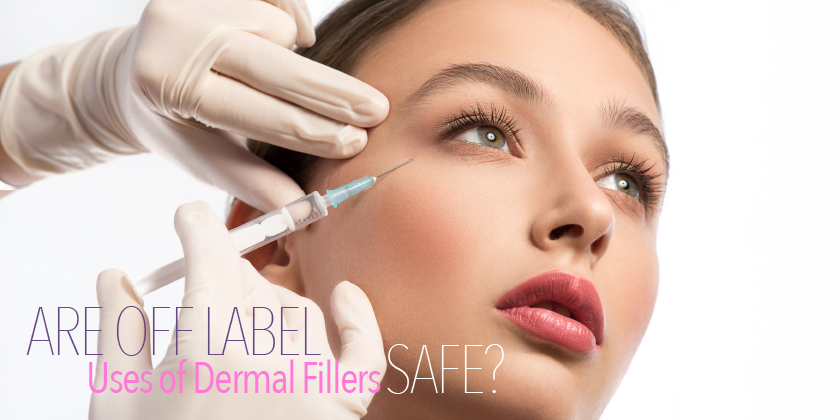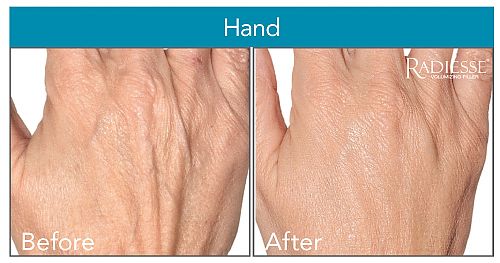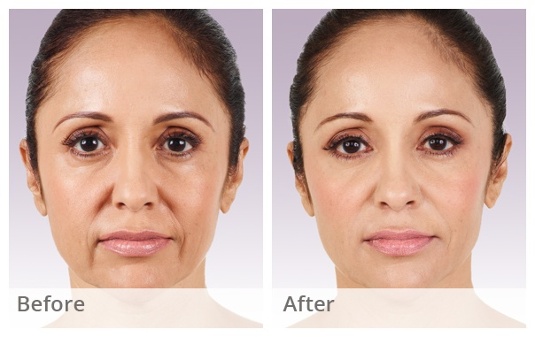Dermal filler injectable products are considered “medical devices” per the U.S. Food and Drug Administration (FDA). Though they are soft product injectibles, (a.k.a. soft tissue fillers) and most naturally dissipate in the body over time, they are structural “devices” which can alter the shape of the face. All products presented to the FDA for approval for use in the U.S. consumer market must follow a rigorous and independent research and review protocol. Each filler product approved for use in the United States is approved for specific use in specific areas of the face or body. For example the FDA has approved JUVÉDERM VOLUMA®XC injectable gel specifically for deep injection in the cheek area to correct age-related volume loss.
However, this does not mean the product is contraindicated for use in a different part of the face.
Contraindication means that a product or drug has a known risk of adverse affect.
So a physician may recommend use of the product in other areas based on experience with the products, procedures and patient outcomes. Every face is unique and every patient’s goals are unique. Medical professionals will recommend a unique treatment based upon your goals and facial anatomy. Dermal filler injectors frequently and safely place the products in off-label areas of the face to lift, smooth and contour.
Why are various fillers used throughout the face?
Each filler type has unique compositional properties such as the viscosity, thickness, malleability, firmness and longevity. Therefore an experienced physician will be able to recommend a combination of products that will produce the desired effects most effectively and efficiently. There is no one size fits all filler. Let’s consider all the ways that dermal fillers are utilized to sculpt facial features for a smoother, more youthful effect, many of which are considered “off label” usage.
What are all the ways facial fillers are used?
You may be surprised to learn a common but “off label” use for wrinkle fillers is to fill in hollowness in areas such as the temples or the tear troughs (under eye). These areas can add to that aged, tired look but can be improved with filler. Besides filling in areas of depression such as the lines from the nose to mouth (nasolabial folds), fillers are also used to create structure.
Patients know a key sign of youth is a strong and well defined jawline and chin. Filler products with a “sturdy” composition can be placed around the chin and jawline to give more structure to an ill-defined area. And as we age lips can start to lose volume, lines increase, and naturally turn inward and thin. To reverse this, various fillers [see comprehensive list here] are used in combination to plump lips, smooth lip lines, define the outline of the lips (vermilion border) and even give a well hydrated look.
Another key area of dissatisfaction for patients is a general grumpy or sad look that does not match with disposition or emotion. As we age the muscles that push downward may overcome those that push upward near the mouth causing a permanent frown. Filler near the corners of the mouth may be used in conjunction with Botox or Dysport to anchor the upward pushing muscles and relax the downward pushing muscles (improving a down-turned looking mouth, or permanent frown).
And have you heard of a non-surgical nose-job? Yes, filler can be employed in some cases to change the shape and contours of the nose. Don’t forget about other areas of the body that can give away your true age…the chest or décolletage are often ignored, receive an increased amount of sun damage and may start to develop fine lines and wrinkles due to the natural loss of collagen. With a few injections of filler, those lines can be smoothed giving an instant improvement.
And the hands! Are you starting to notice prominent tendons in the hands? Add a long lasting, thick filler like Radiesse and add back the plump look of youth.
5 common uses of fillers for the face
Of course there are also the most common uses of fillers but physicians may recommend a product that is not specifically approved by the FDA for that area. Common areas are:
- Adding curvature and lift in the cheeks
- Creating lower face lifting by adding volume in the mid face
- Smooth parentheses lines and folds around the mouth
- vertical lines or folds from the outside of the nose to the corner of the mouth
- Smooth marionette lines
- deep vertical lines from the corners of the mouth
- Plump lips and smooth vertical lip lines
What type of facial fillers do I need?
Each person’s facial structures, genetics, and aging processes are unique. It is important to have a consultation with a provider so you can understand what is happening below the surface of the skin, the options for treatment and the costs. To learn more about the consultation process check out these handy guides:
What to Ask Your Injector [with downloadable checklist]
Important Questions to Ask During Your Medspa Consultation [free checklist]
Further Reading:
- All You Need to Know about Dermal Fillers
- Brilliant Distinctions | Making Fillers and BOTOX® Affordable
- Comprehensive List of Facial Fillers | Pricing, Longevity, Satisfaction & Placement
To schedule your FREE consultation call 480-470-5747 today or complete the form above.







